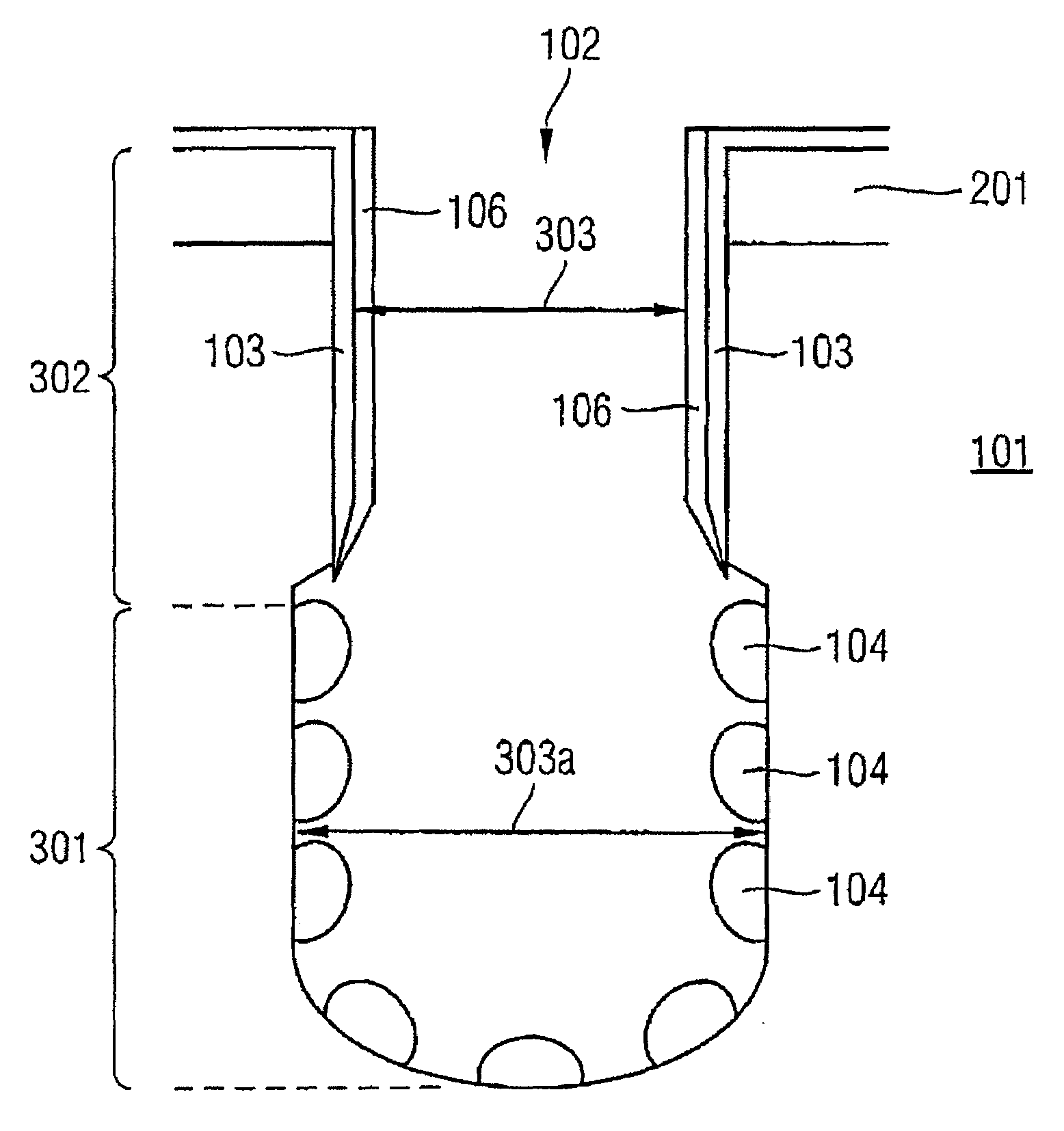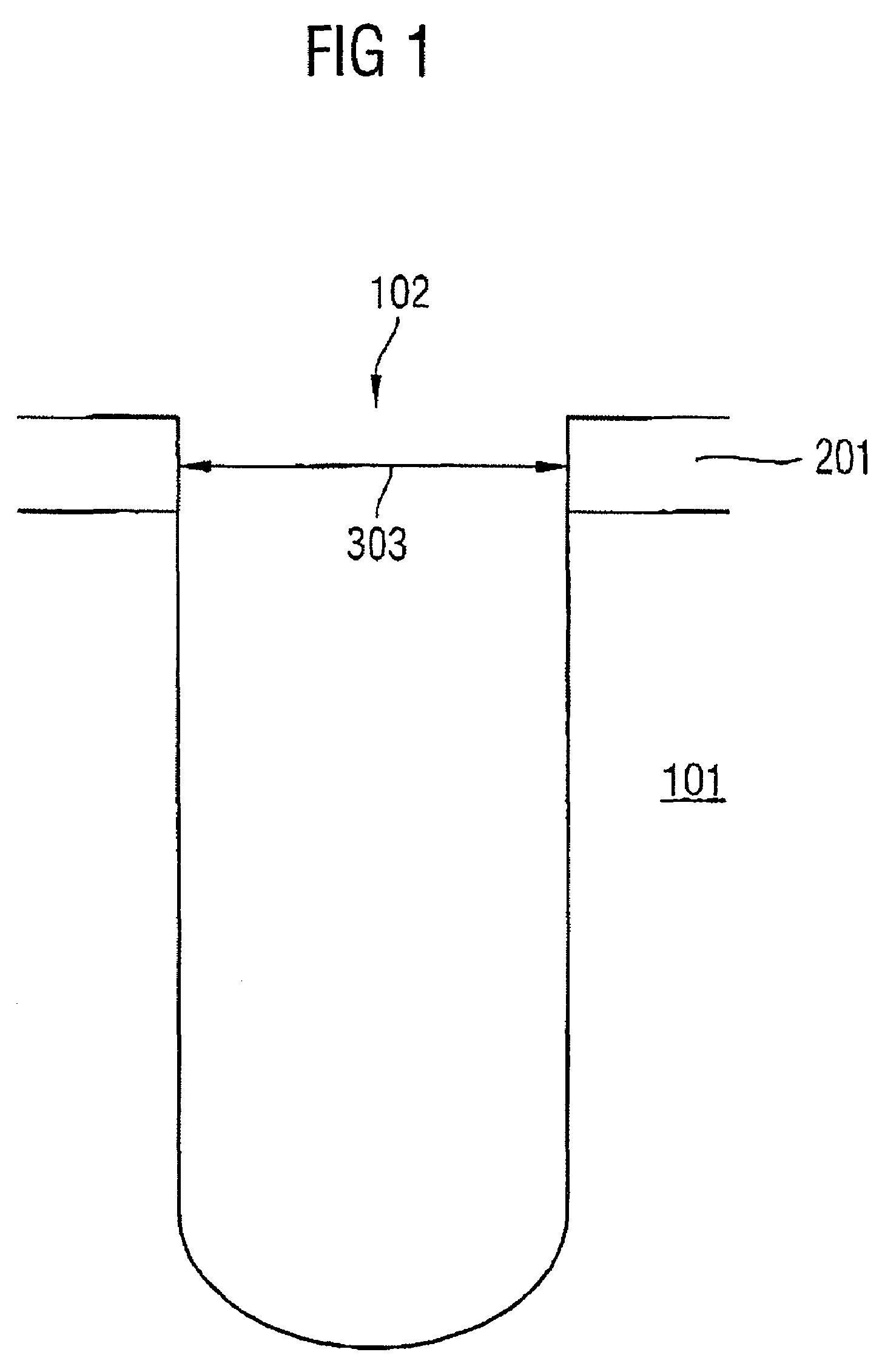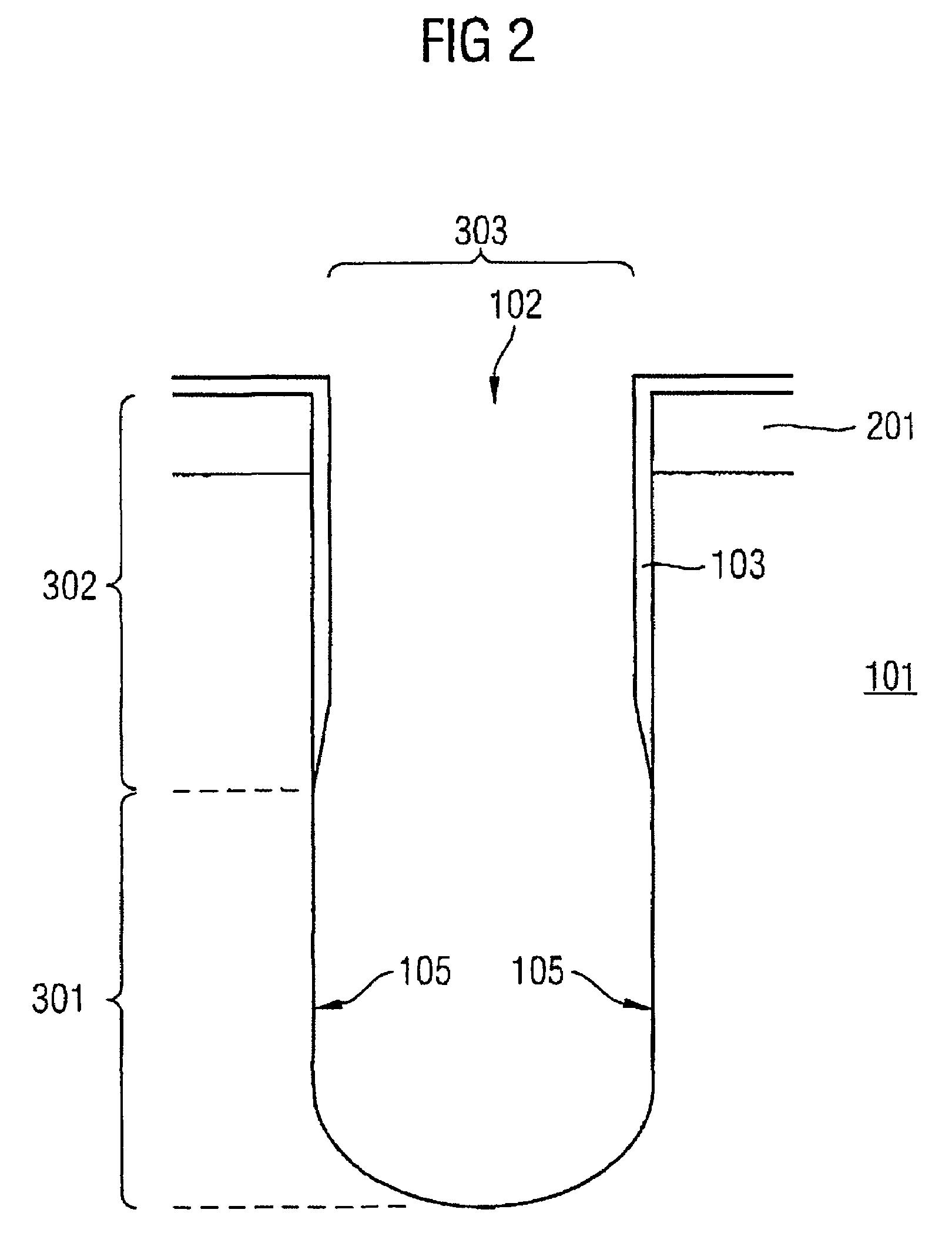Memory cell and method for fabricating it
- Summary
- Abstract
- Description
- Claims
- Application Information
AI Technical Summary
Benefits of technology
Problems solved by technology
Method used
Image
Examples
Embodiment Construction
[0059]In the figures, identical reference symbols designate identical or functionally identical components or steps.
[0060]FIG. 1 shows a silicon substrate 101, to which a nitride layer is applied as a protective layer (a pad nitride). Furthermore, a trench-type depression (deep trench) 102 having a width 303 of typically 20 nm to 500 nm is etched into the substrate 101 shown in FIG. 1. The arrangement shown in FIG. 1 forms a basic element for fabricating a memory cell according to the invention.
[0061]FIG. 2 shows the arrangement illustrated in FIG. 1 after deposition of a barrier layer 103 in a collar region 302 forming an upper region of the trench-type depression 102.
[0062]It should be pointed out that in FIG. 2 and the subsequent figures, those elements that have already been described in previous figures are not described anew in order to shorten the illustration.
[0063]In an electrode region 301 forming a lower region of the trench-type structure 102, inner areas 105 have remain...
PUM
 Login to View More
Login to View More Abstract
Description
Claims
Application Information
 Login to View More
Login to View More - R&D Engineer
- R&D Manager
- IP Professional
- Industry Leading Data Capabilities
- Powerful AI technology
- Patent DNA Extraction
Browse by: Latest US Patents, China's latest patents, Technical Efficacy Thesaurus, Application Domain, Technology Topic, Popular Technical Reports.
© 2024 PatSnap. All rights reserved.Legal|Privacy policy|Modern Slavery Act Transparency Statement|Sitemap|About US| Contact US: help@patsnap.com










